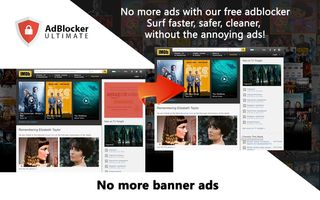Web design isn’t just about making sites that look pretty – it’s about making interfaces that perform a function, and serve visitors in a way that’s seamless, pleasurable and useful. And that means web designers can’t just work in a bubble, but need to be aware of broader trends influencing how users expect websites to look, feel and function.
In this post, we’ll look at some of the biggest and most popular changes happening on the internet right now and bring you up to date.
01. The rise of voice and chat

Customer service chatbots – conversational interfaces that make you think you’re talking to a real person, when you’re actually communicating with a computer program – have been around since the early 2000s. But recently the rise of new AI technologies have given the chatbot a shot in the arm, and they’re now seemingly everywhere you look on the web.
Right now, most chatbots are really just a fun and user-friendly way of filling in a web form. But when combined with voice recognition technologies, it’s now increasingly possible to actually, you know, chat with chatbots.
While that may sound a bit sci-fi and creepy to some, a lot of people seem to be happy to do so: Google revealed at I/O last year that an astonishing 20 per cent of it mobile enquiries were made by voice.
In some cases chatbots can come across as intrusive and annoying. But for ecommerce sites in particular they are likely to become increasingly necessary to drive conversions and sales. And with Amazon, Apple and Google all feverishly developing their own voice UIs, alongside mass-market conversation devices such as Amazon Echo and Google Home, they’re going to get more and more accurate and useful.
To learn more about how to get involved in the voice and chat space, check out our articles 5 essential chatbot learning resources, How to design a chatbot experience and Why voice UIs are the next big thing in web design.
Get the Creative Bloq Newsletter
Daily design news, reviews, how-tos and more, as picked by the editors.
02. The streaming revolution

In case you hadn’t noticed, we’re undergoing nothing less than a revolution in terms of how we enjoy our audio and video content. Netflix now makes up more than 30 per cent of home entertainment revenue in the US, and streaming music led by Spotify has surpassed physical music sales in terms of revenue.
Right now, the giants of the web are busy trying to nudge out broadcast TV when it comes to live streaming video. Twitter especially seems to see its future in this space. During the last American football season it struck a one-year, $10 million deal to live stream NFL games. And in December it announced the streaming of live, interactive 360 videos via Periscope.
This year, though, Amazon beat Twitter on the NFL front, reaching a deal to stream 10 Thursday Night Football games this year for around $50 million, while Facebook Live has struck a deal to live stream Champions League soccer games with Fox Sports.
And that’s without even mentioning the competition from the likes of YouTube Live, Instagram, Snapchat, Twitch, Livestream, YouNow and UStream.
Downloads, broadcast and cable TV are dying and the future is firmly fixed on online streaming. In a sense, Gil Scott-Heron was right: the revolution will not be televised.
03. The ads apocalypse

Remember those heady days when we all thought we could make a living from our blog, just by putting up a few ads on it? Well, those days seem to be numbered, even for big media. As the overall supply of ad space has increased, the more programmatic ad systems have driven the price down across the board, and busted that model entirely.
The experiences of major newspapers point to the way this trend has evolved. A decade ago, they all thought they’d be able to fund their journalism by giving it away for free online, and making money on ads.
But with disappointing returns, everyone had to add more and more intrusive commercials to their pages, which led to the rise in ad blockers, which led to more ads to make up the shortfall, and the vicious circle has continued. As a result, many newspapers are now retreating behind paywalls or, in cases like The Guardian, ending each article with a begging letter for donations.
Ironically, over the same period, the total volume of ad spending online has increased massively. In the US this outstripped TV spend for the first time in 2016, according to the IAB Internet Advertising Revenue Report conducted by PwC. But that’s been no help to traditional media, because it’s all going to Google and Facebook, which currently control a staggering 85 per cent of online ad growth.
04. The VR web

You probably think that virtual reality is a gimmick, that you can just ignore and it will soon go away. And that’s probably because you’ve either not experienced it yet, or you've only experienced it through a cheap headset attached to a mobile phone, creating a somewhat clunky and underwhelming experience.
But believe us, once you’ve tried out a VR program such as Google’s Tilt Brush, on a high-end system attached to a powerful computer, you’ll think differently. Like Skype, HD or streaming video, VR is ready to change the world, and it’s only matter of time. And that will certainly include the web.
Right now, it’s providing web designers with a lot of client work for big brands, as everyone tries to jump on the VR train and how it can work for them. You can see some great examples in our post 8 amazing uses of VR that will blow your mind.
To further explore the scenarios that browser-based virtual reality enables, and dive into the new tools and frameworks that have evolved alongside it, check out our article 5 ways VR is changing web design today and these tutorials to help you use VR in your design work.
05. Content skimming

We all like to think that when a lot of people share our blog posts online, it means they’re a hit. But it ain’t necessarily so. Research has shown that a staggering amount of people sharing content on Facebook and Twitter aren’t actually looking at the content – they’re just looking at the headline.
A study by Columbia University and the French National Institute, for example, found that 59 per cent of links shared on social media have never actually been clicked. In other words, people were sharing an article without actually reading it. It’s a sign of how time-poor we are in our busy lives, as well as how much other digital stuff is competing for our attention.
We’re not sure what the solution is here, but one thing’s for sure: when it comes to designing your site, you certainly can’t rely on people reading your website’s content from cover to cover. And when it comes to approaching things like hierarchy, you need to take this fundamental truth into account.
For detailed advice on how to lay out your web pages, check out our article 23 steps to the perfect website layout.

Thank you for reading 5 articles this month* Join now for unlimited access
Enjoy your first month for just £1 / $1 / €1
*Read 5 free articles per month without a subscription

Join now for unlimited access
Try first month for just £1 / $1 / €1
Tom May is an award-winning journalist and editor specialising in design, photography and technology. Author of the Amazon #1 bestseller Great TED Talks: Creativity, published by Pavilion Books, Tom was previously editor of Professional Photography magazine, associate editor at Creative Bloq, and deputy editor at net magazine. Today, he is a regular contributor to Creative Bloq and its sister sites Digital Camera World, T3.com and Tech Radar. He also writes for Creative Boom and works on content marketing projects.
